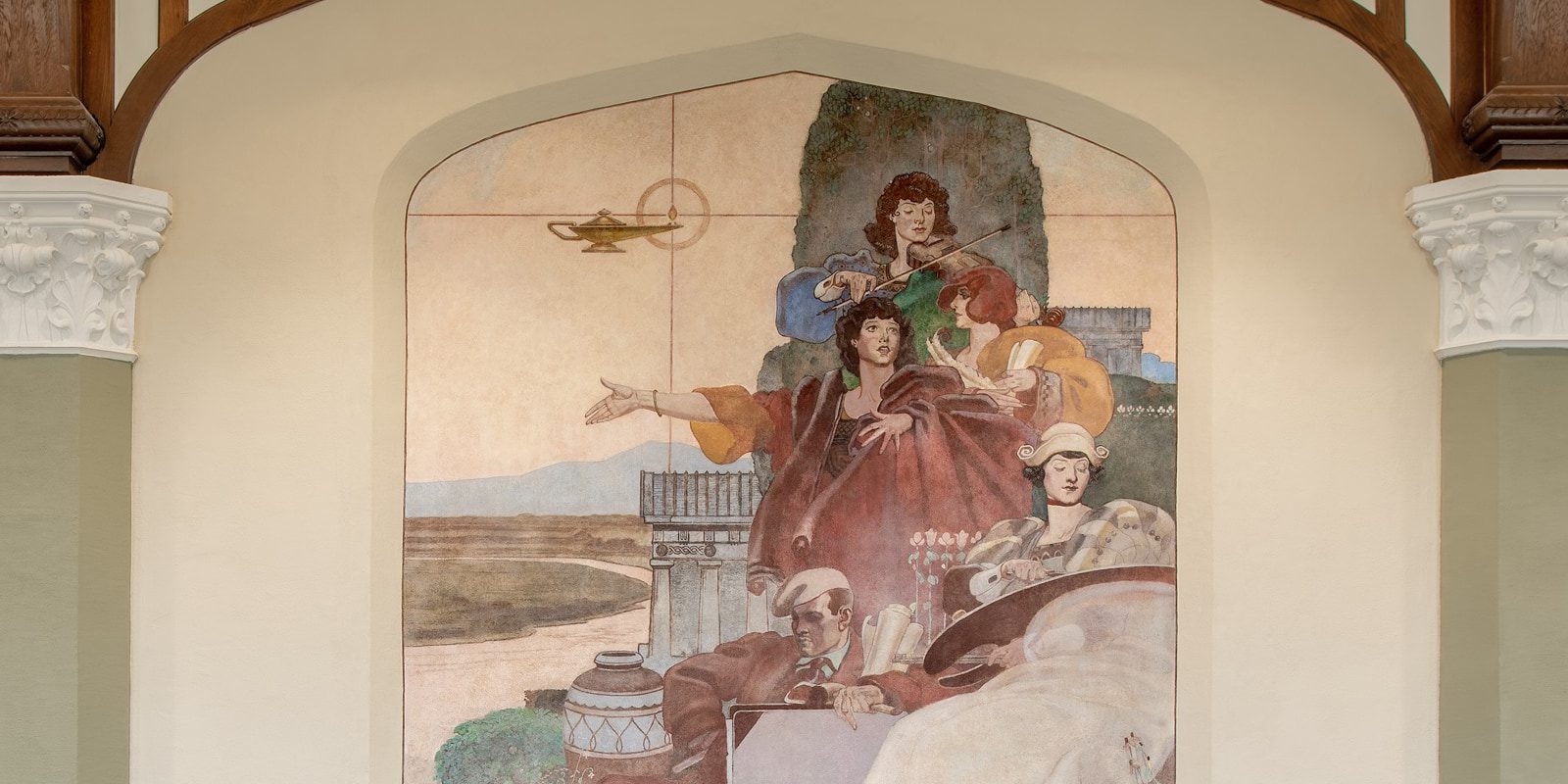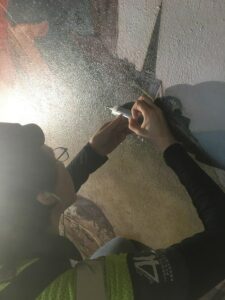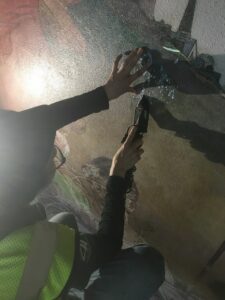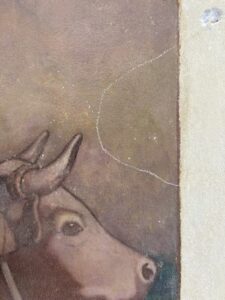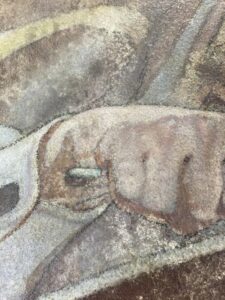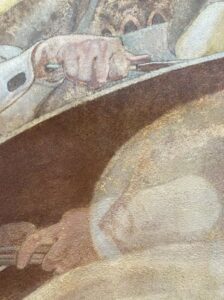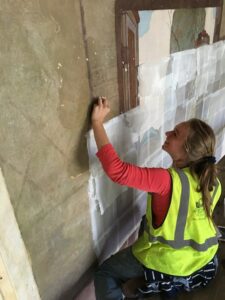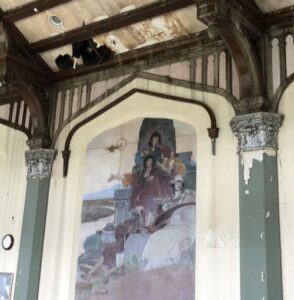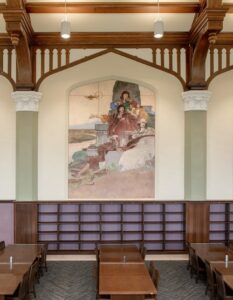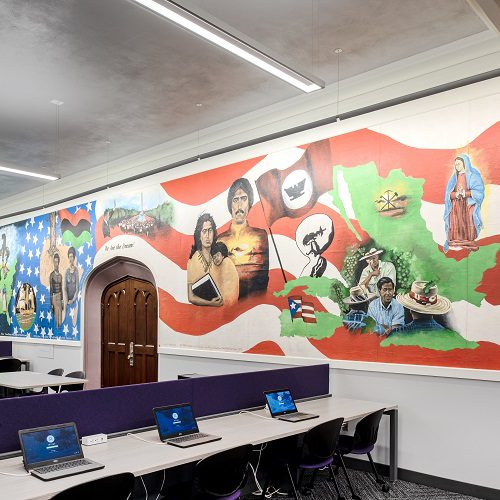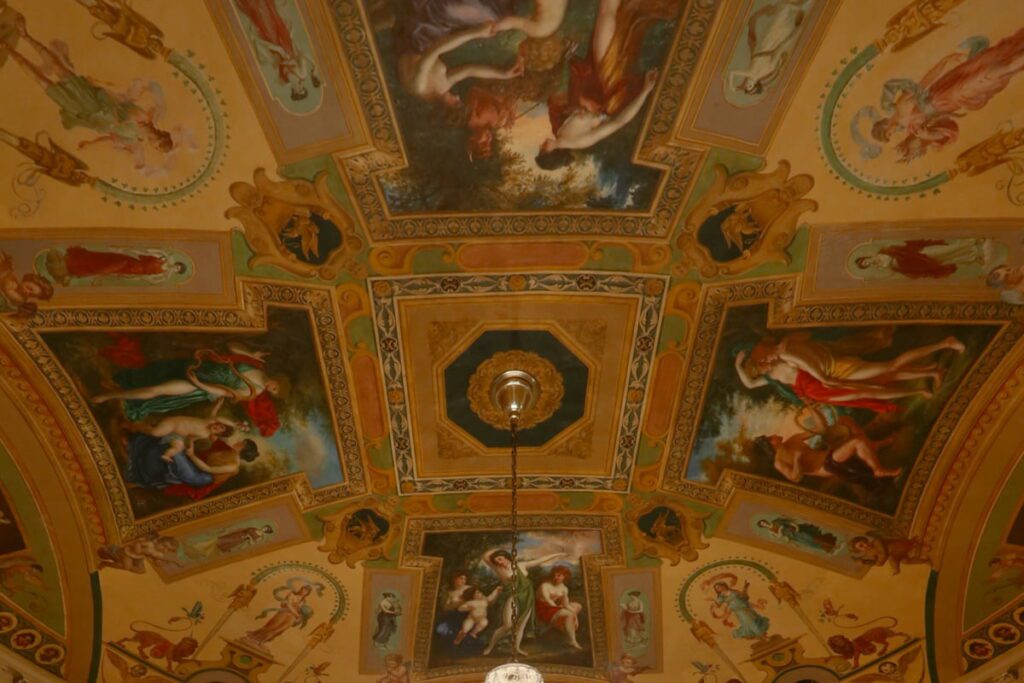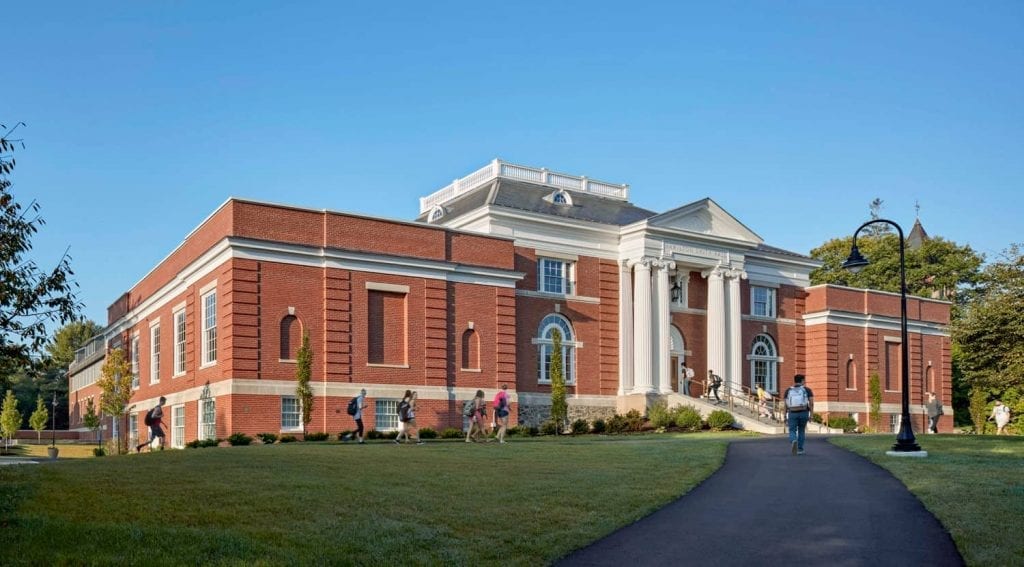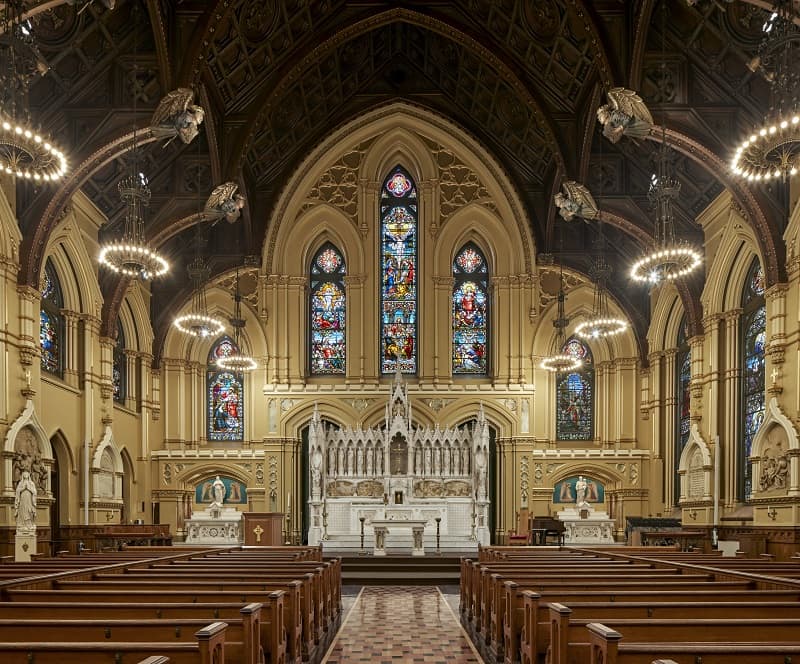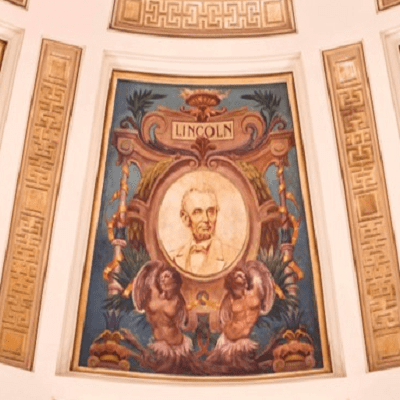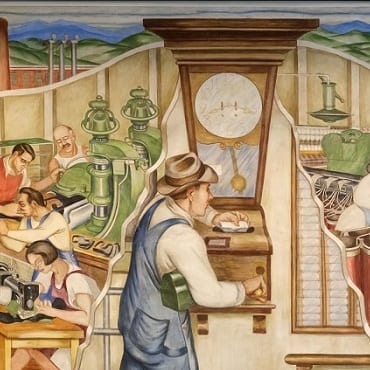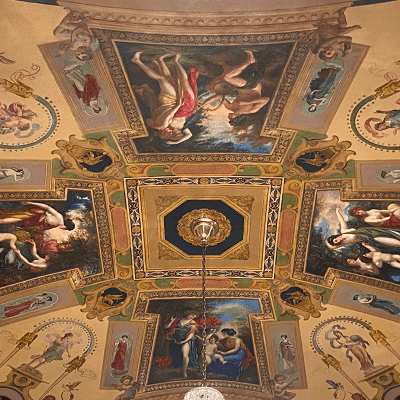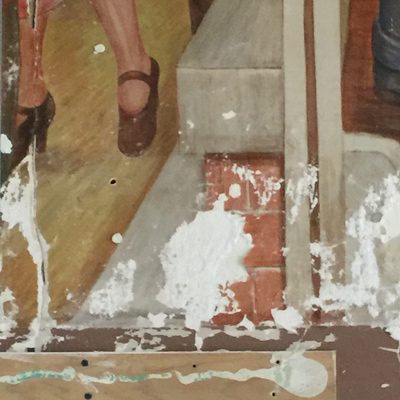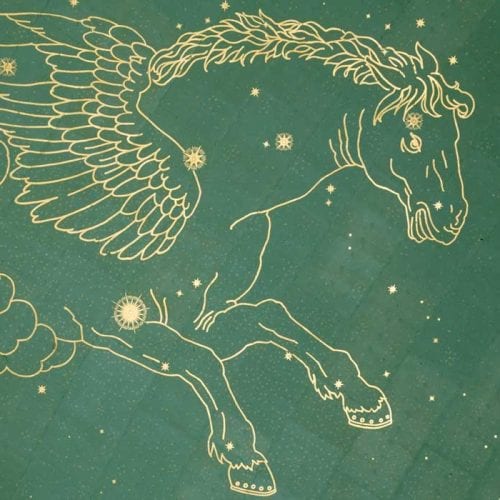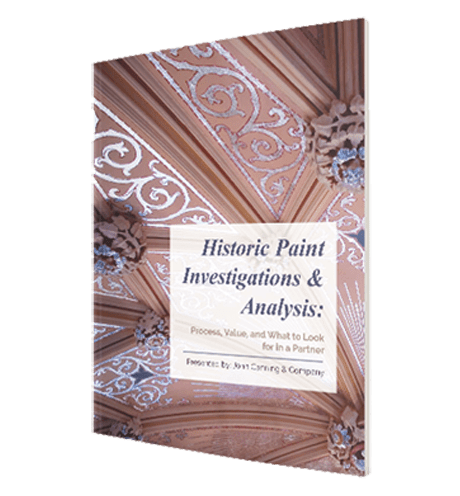Paint consolidation is a crucial step in the process of fine art conservation. Over time, a painting may experience damage due to separation of the paint layers. Consolidation is the process of re-adhering the paint layers to the base in order to preserve the work of the original artist. Cracks, separation of paint layers, and delamination can be caused by a variety of factors. Once the underlying issue is identified, the approach to consolidation is determined through a series of tests, analysis, and a comprehensive understanding of the artwork’s material make-up.
The need for consolidation may arise as a result of age, environmental changes, direct damage, or previous repairs to the artwork. Abrupt temperature/humidity changes or water intrusion may cause the paint layers to swell and then to crack when returning into place. Environmental changes may also cause the canvas to shrink resulting in tenting of the paint layers. Additionally, these types of environmental conditions can cause mold or bacteria growth, damaging the substrate and paint layers. Exposure to extreme heat as a result of a fire or poor storage may cause blisters in the paint layers. Heat damage may also be present as a result of improper past repairs. Further, since incompatible materials tend to separate over time, mixed media present from previous repairs or the original artist can cause destabilization of the paint. Addressing the underlying issue is key to mitigating future damage and securing the integrity of the work.
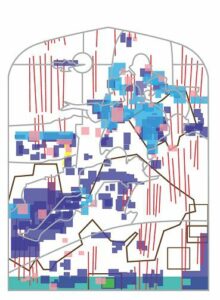
Example of mapping of the conditions of mural.
Damages to the murals are mapped on vellum and accompanied by written reports to keep a detailed record of damage to the substrate and locations of paint failure/loss. Throughout the process, these maps may be redrawn to access and compare conservation progress.
(Left) Consolidant being applied to paint. (Right) Low heat iron being applied to flatten and smooth the adhesive.
The consolidant is then applied to the damaged areas. Typically, the consolidant is a liquid mixture of adhesive or resin and is applied to the surface or back, depending on the needs and approach, with a syringe or brush in order to reach localized damage. The chemical makeup of the liquid mixture must be flexible and reversible as well as compatible with the existing work. The liquid form allows the consolidant to seep behind the paint layers into hollow cavities. Once the consolidant is applied, it may require a low heat iron applied over vellum or simply pressure applied over vellum to flatten and smooth the adhesive. Gently applying pressure to the surface assists the unstable paint layers into place with the consolidant. Weights or support may be left in place depending on the needs of the painting. Conservation to ceiling murals may require temporary supports following consolidation to counter gravity. Consolidation is carried out and recorded methodically to ensure the surface is stable and the work of the original artist(s) preserved prior to addressing any losses.
(Left) Detail, “Agriculture” areas of loss and hollow sounding plaster. (Right), Detail, “Agriculture”, after full conservation at Kansas State University’s Hale Library.
(Left) Detail, “The Arts”, areas of loss. (Right) Detail, “The Arts”, after full conservation at Kansas State University’s Hale Library.
Depending on the condition of the painting, facing paper, applied over the surface of the work, may be necessary to protect the paint layer in the short-term. Facing paper is the temporary attachment of thin paper, often washi or Japanese paper, to the surface of the artwork with a water-soluble adhesive. The facing paper provides a number of benefits during conservation. The paper itself contains very few impurities and is made of only a handful of traditional ingredients. Facing paper may be adhered to the surface of a work for careful transportation from site to studio during conservation. It may also be used to protect the surface of the mural while local environmental conditions are mitigated prior to conservation efforts. The paper offers a flexible and supportive protection to the paint layers during conservation.
Japanese mulberry facing paper being applied to the Overmyer murals at Kansas State University’s Hale Library.
The consolidation process should not alter the appearance of the artwork. Any residue from the adhesive must be carefully cleaned from the surface before proceeding with further conservation efforts. Unlike surface cleaning or inpainting where visual results are immediate, consolidation is a laborious yet necessary process in stabilizing the relationship between the existing paint layers and the base prior to any cosmetic repairs. In order for inpainting to have a successful and lasting effect, any persistent damages must be addressed and the paint layers secured.

